How to Dry Sourdough Starter
I’m going to show you how to dry sourdough starter. Why? Because drying is the best way to preserve your sourdough starter for the long term.
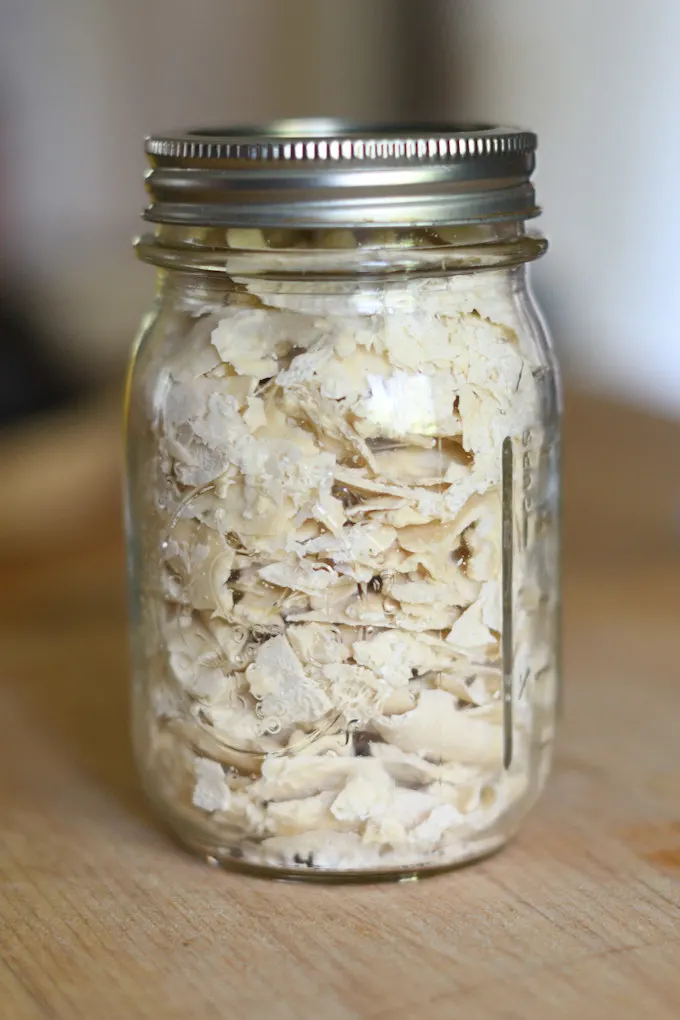
So you’ve jumped on the sourdough bandwagon, YAY! It’s so much fun, isn’t it?
But, there are times when real life interferes and you may not be able to bake for quite a while. Or maybe you want to share your starter with a friend who lives far away. Or maybe you just really hate to discard that discard.
The solution is this incredibly easy-to-do process for drying your starter. Once the starter is completely dried, your hard-won wild yeast goes dormant. The dried starter chips can then be stored indefinitely.
You can also pack some chips into a small envelope and mail them to a friend. I mailed some to my daughter who lives 3000 miles away. It’s a nice way to share from afar.
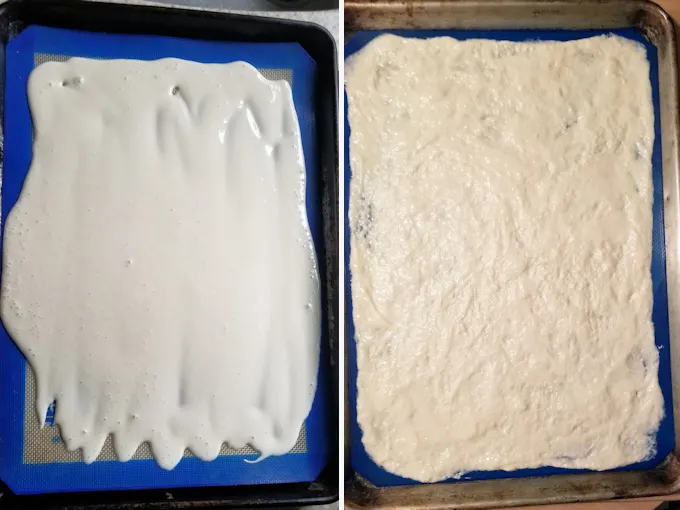
FAQs about drying sourdough starter and preserving sourdough starter:
I dried both a recently fed starter and sourdough discard which hadn’t been fed in over a week. I was able to revive both, but the dried sourdough discard did need an extra feeding before it was ready to use.
Yes, but don’t turn on the heat. Use the convection fan without heat or just leave the tray in the cool oven with the oven light on.
Yes. I used my dehydrator on the lowest temperature setting (90°F). It took about 8 hours for two trays of starter to dry.
Yes, it may take a bit longer but just leave it out at room temperature until it is completely dry and brittle. The time will vary based on the ambient humidity in your kitchen.
Indefinitely.
Add water and flour and wait for it to come back to life. Follow the instructions listed below. Also, you can grind the sourdough starter into a power which can be stored to rehydrate later or can be used directly in certain recipes.
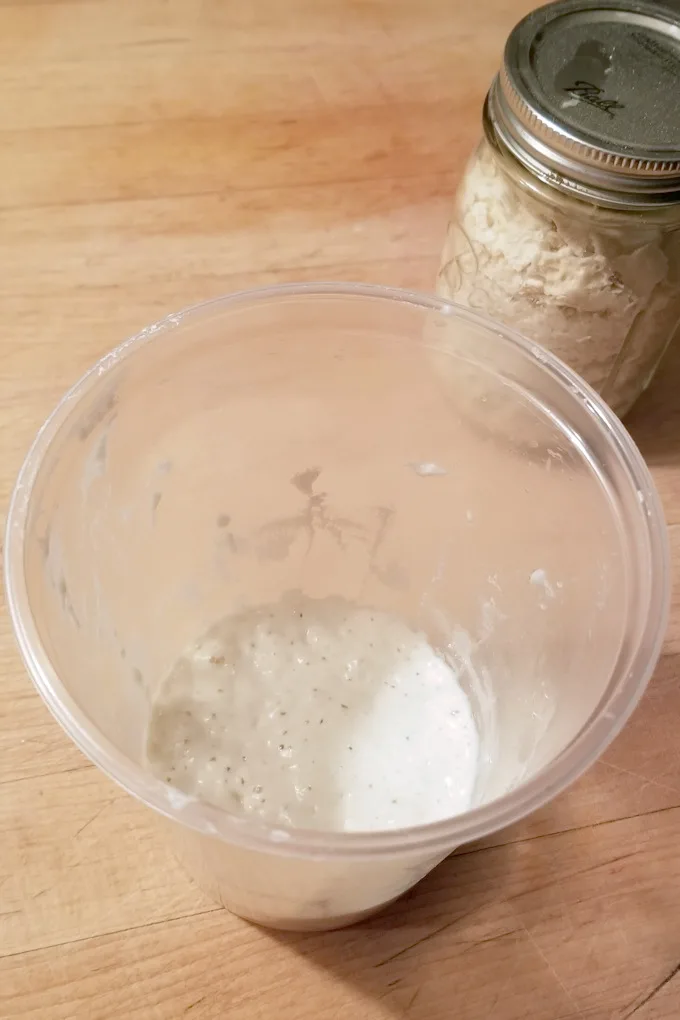
If you find this information helpful, I’d really appreciate a 5-star review!
How to Dry Sourdough Starter
Equipment
- Silicone Baking Mat or Parchment paper
- Half sheet pan
- Small spatula
Instructions
To dry the starter:
- Line the sheet pan with a silicone baking mat or parchment paper. The silicone mat works best so use it if you have one.
- Pour the starter onto the sheet pan and spread it out to a thin, even layer.
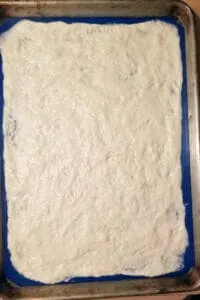
- Place the pan in a cool, dry place, uncovered. I put mine into the oven with the convection fan on and no heat. Alternately, if you have a food dehydrator you can use that on the lowest temperature.
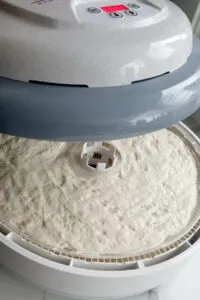
- After 18-24 hours check the starter. It should peel off the mat. If underneath the starter is still moist you can peel it off, flip over the pieces and leave them to continue drying. If using a food dehydrator check after 6-8 hours.
- The starter is ready when it is completely dry and crisp. The texture should be like a potato chip which snaps when broken into pieces. You should have half the weight that you started with. If you started with 12 oz of starter you will get 6 oz of dried starter.
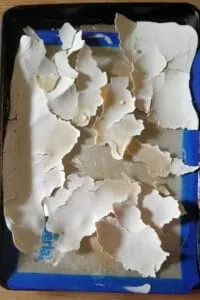
- Break the starter into chips and store in an airtight container at room temperature.
- The dried starter will keep indefinitely. The dried starter chips can be ground into a powder.
To revive the dried starter: (yield 9 oz of starter)
- Place 1/2 oz (14g) of starter chips or powder in a plastic or glass container. Pour 1 oz (28g) of warm water over the chips and stir to cover the chips with water.
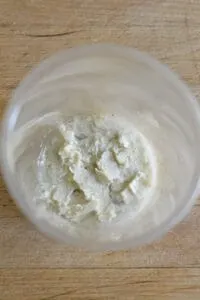
- Cover the container and set it aside until all the chips have melted into the water. This usually takes about 3-4 hours. The starter will not look active at this point.
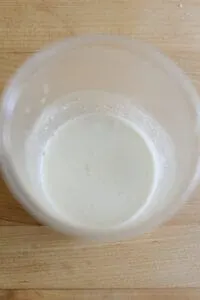
- Add another 1/2 oz (14g) of warm water and 1 oz (28g) of unbleached flour to the starter. Stir to combine. Cover and set aside for 4-6 hours. Now you should begin to see activity in the starter.
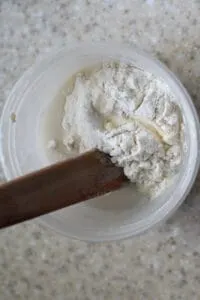
- Add 3 oz (84g) of warm water and 3 oz (84g) of unbleached flour to the starter. Stir to combine. Cover and set aside for 3-4 hours or until the starter has doubled in size and looks quite active.
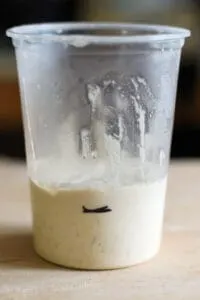
- If after 4-6 hours the starter still seems sluggish, discard all but 3 oz of the starter and do one more feeding.
- Use in your recipe as needed.
- The amounts listed can be multiplied out to yield more starter.

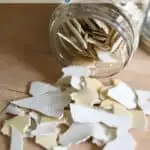
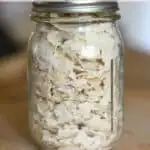
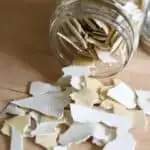
I have dried my starter as you suggest and it is now in a jar.
My question is, would it be possible to grind the flakes and use them like a normal dried yeast?
As it will not be as strong as bought dried yeast I would double the mmount used..
What do you think?
I’ve been doing experiments with ground dried starter. I’m not ready to publish yet, but I am working on it.
P.S. Great minds think alike, I guess!
I don’t think using it directly in a recipe would work — it can take 12 hours or more for a dehydrated starter to “wake up” and become really active. Remember — the dried yeast we get from the store is a strain that is specifically chosen because it wakes up fast, the yeasts in our starters are wild.
That being said, grinding may well save hours off of the front end of waking up the starter because it won’t take as long to rehydrate. I haven’t done this, but it seems reasonable. Also, if grinding in a food processor or Vitamix, use several short pulses — allowing the machine to run too long will heat the dry starter, possibly killing our dormant yeasts and bacteria.
I have wanted to use sourdough starter but am not always home to feed so i disregarded any reCipes using starter. Yeah. Thank You for your post about drying starter. I am a new subscriber of your blog. I found it when looking for a buttermilk bundt cake recipe. Lucky me. I can already see how informative and useful it will be and can’t wait to starting baking. Not only do you recipes look great but the informative intro. Will make me a much better baker.
Thanks Iris. I’m doing quite a bit of experimenting with dried sourdough starter. Stay tuned!
I have had great success keeping small amounts of starter in the refrigerator when I’m not baking every couple of days. I mix 20g starter with 20g flour and 20g water Leave on the counter for an hour and then stick in the refrigerator. Even after several weeks of no feeding, it usually wakes up after a feeding or two. Just take it out a day or two before you want to bake, stir the hooch back in, feed 60g flour and 60g water with no discard, then 180g flour and 180g water about 12 hours later (sooner if it has reached its peak), again with no discard. Then feed normally. In the refrigerator, I always keep it in the coldest section, which is about 38F or 3C.
This is positively genius! I can’t wait to try it!
Great idea
I bought an old (1970s) book about bread and inside is a packet of dried starter. I’m tempted to see if it works….also scared I will poison myself….
@Jaki, that is so cool! I hope you tried it. I’d be curious to know the results.
@Jaki, I have a package of dried San Francisco stated that is 35 years old!! I’m trying to revive it right now. My research brought me to this site. We’ll see how it goes : )
Thank you for the tip. I am able To my starter so drying it a wonderful idea.